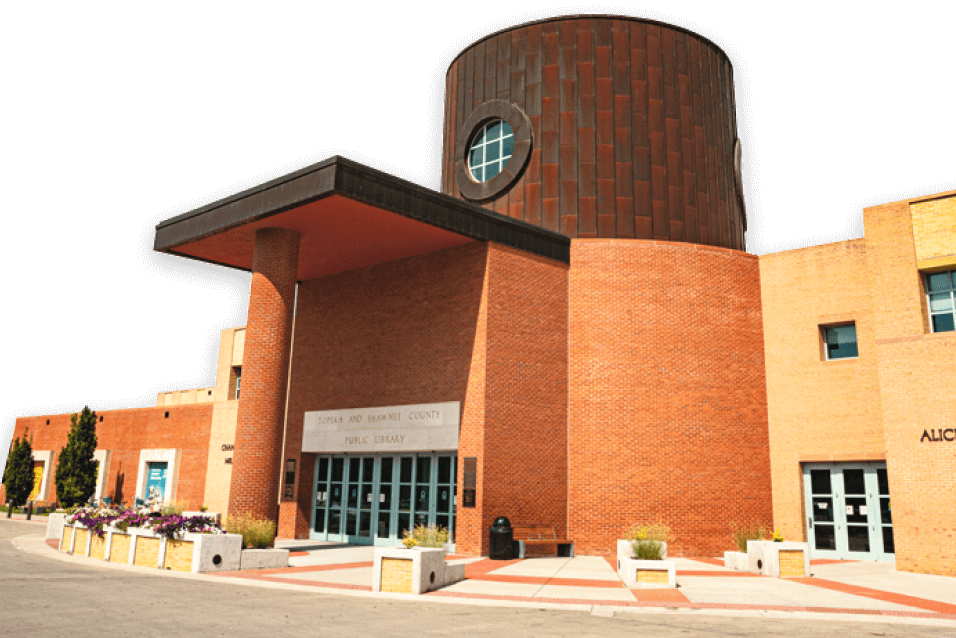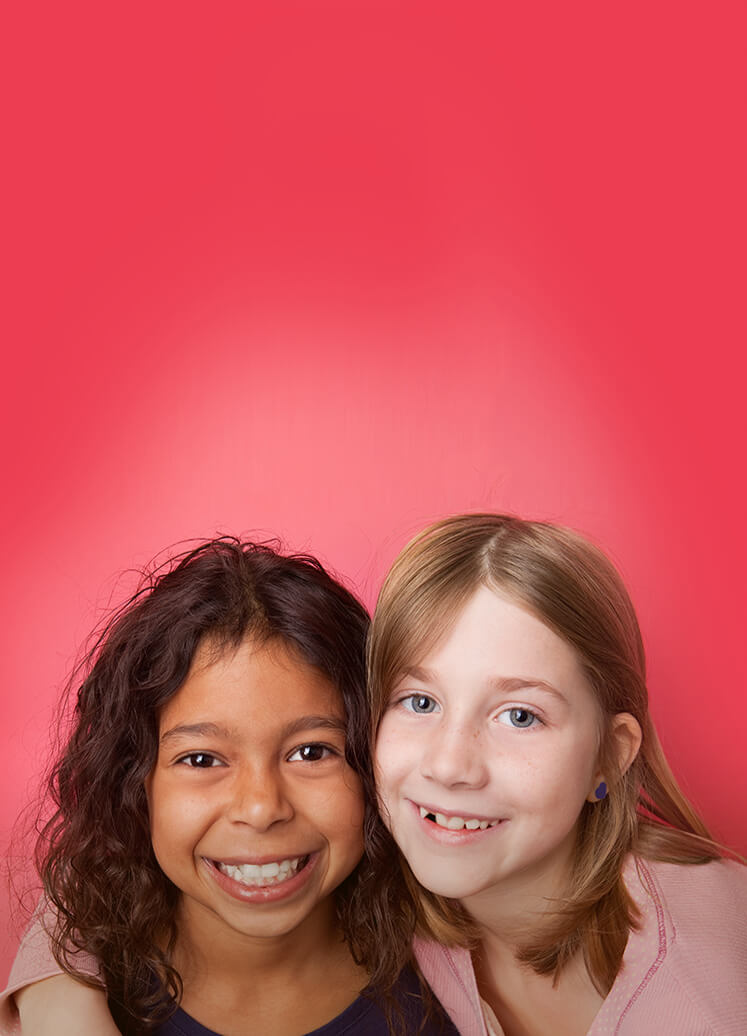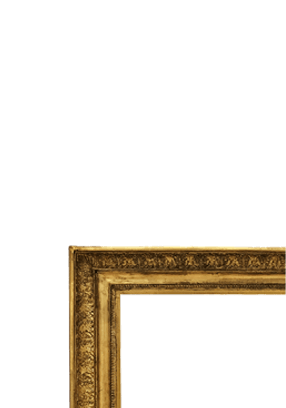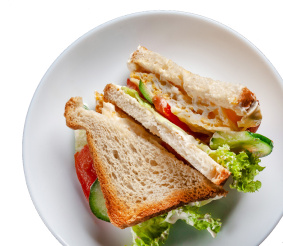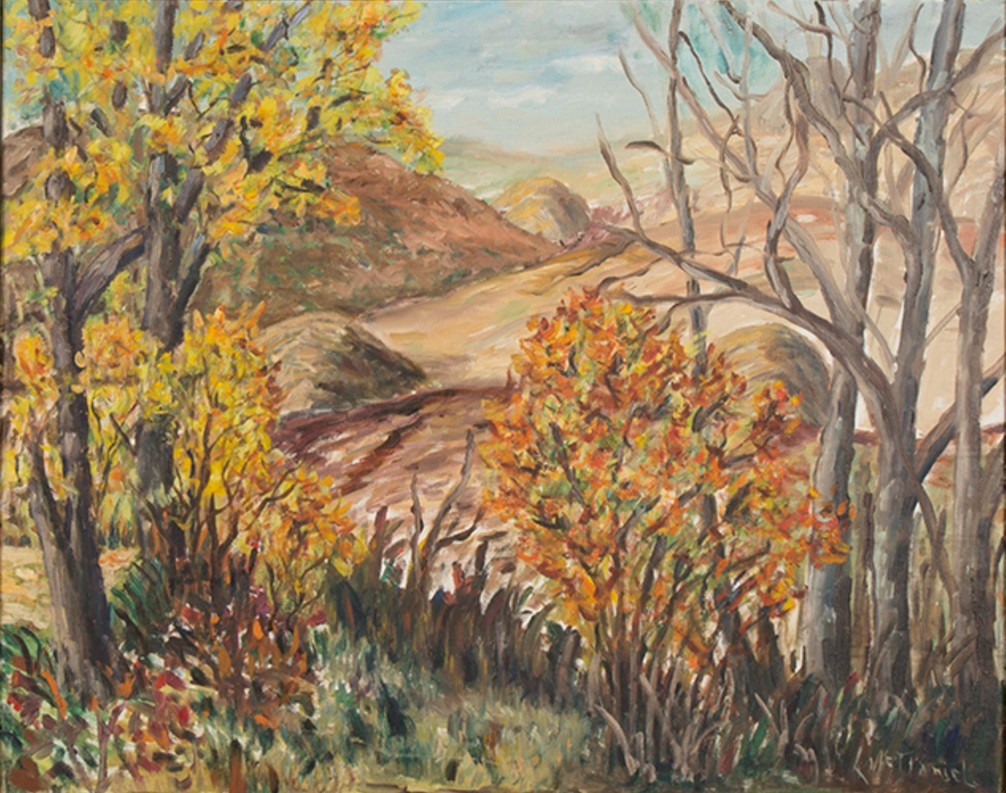Lesson Plan: Falling Leaves

Landscape
Leona HaskillMcDaniel
Oil paint, canvas
TSCPL Permanent Collection
Title
Falling Leaves
Grade
Kindergarten - 2nd grade
Media
Crayons and tempera paint
Objectives
- To learn about using different media and art tools.
- To learn about visual and actual texture.
- To learn about warm and cool colors and the associations we make with each set.
- To learn about tree structure. (Optional)
Vocabulary
- Texture-surface quality (rough, smooth, etc)
-
- Visual texture – made to look like it is rough, hard, soft etc.)
- Actual texture – made with real surface that you can feel
- Warm and cool colors
- Warm – red, orange, yellow
- Cool – green, blue, purple
- Parts of a tree: crown, nodes, parent (trunk) & children (branches), roots, leaves
Supplies
- Fall leaves from different trees. If you have time, have the students pick from school yard/trees.
- Pencils
- Crayons – square crayons or large crayons with paper removed
- Black tempera paint
- White paper
- Paint brushes
- Paper towels
Resource
Procedure
- Write name on one side. Turn over.
- Fold paper in half taco style. Unfold.
- Demonstrate how to make crayon rubbings by using the side of the crayon. Fill the page.
- Create leaf rubbings (actual texture) with crayons and real leaves over entire page as follows: top ½ warm colors & bottom ½ cool colors
- Draw tree using Y-pattern over top of warm and cool colored background with pencil. Start by drawing roots in cool half. Next draw trunk and crown on warm half.
- Paint over pencil lines with black tempera paint. Dip paint brush into paint and wipe lightly on inside of container to remove excess paint.
- For smaller lines, may wipe lightly on paper towel as well. Paint lines to fill in trunk and branches and create bark as a visual texture. No water needed
Reflection
Talk about the artworks:
- How does your artwork make you feel?
- What words can you use to describe your artwork?
Assessment
- Students can tell what texture is and know the difference between actual and visual texture.
- Students can list warm and cool colors and explain why they are different.
- Students can tell the parts of a tree.
- Students use art tools materials safely and properly as instructed.
Cross-curricular extensions
Science:
Tree identification Parts of a treeCC state standard
KS.2.
Physical Science: The student will explore the world by observing and manipulating common objects and materials in their environment.
3.1.4.
The student examines the structures/parts of living things.
National CC Visual Arts Standards
VA:Cr2.3.K
Create art that represents natural environments.
VA: Cr2.1.K
Through experimentation, build skills in various media and approaches to artmaking.


